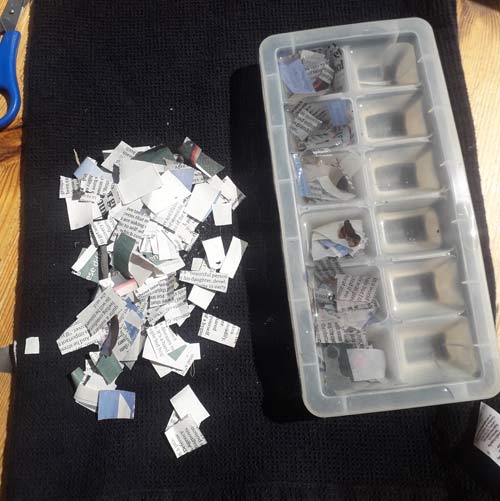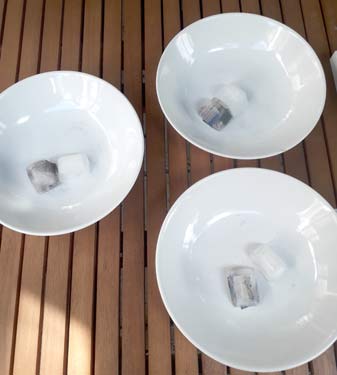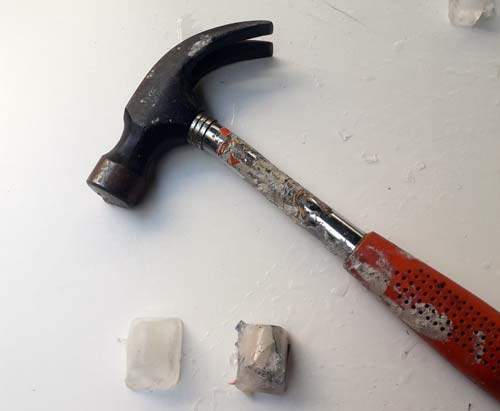Pycrete is named after one of its inventors, Geoffrey Pyke. It is a simple substance, made of wood pulp and water, then frozen. It became famous during World War 2 as there was a plan to build a ship out of Pycrete! HMS Habakkuk was intended to be a floating aircraft carrier, for refuelling planes flying from the USA to Britain.
The version here uses newspaper instead of wood pulp. Just cut up an old newspaper and put some of the pieces in an ice cube tray. Then add water, and put the mixture into the freezer for six hours (or more) so that it freezes. Here we’ve put newspaper on one side and left the other side free, so we can compare pycrete and ice.

After a day in the freezer, this is what we get. The left hand picture shows the cubes turned out of the tray.


One of the properties of Pycrete is that it melts more slowly than ice. To check this, we have put a cube of ice and a cube of Pycrete into three bowls. The bowls will be left in different places – somewhere warm, like a kitchen, and somewhere cool, like a bathroom. One bowl will be left outside – but you can choose other places. These cubes are 2cm high, and I’m going to measure them every half hour until they reach 1 cm high (but if you have bigger or smaller cubes, just measure until the cubes reach half their original height.

Did the Pycrete melt more slowly? Under all conditions?
One of the other properties of Pycrete is that it is very strong. People were confident it could stand up to bombs and torpedoes! When someone fired a gun at a test block, the bullets bounced back from the pycrete and injured an on-looker!
Can you think of a way of testing whether pycrete is stronger than ordinary ice? One way would be to get an adult to use a hammer, but how would you make it a fair test?

For careers in materials and construction see Construction and Energy Generation
